Affordable Baby Bottles Under $20 That Don’t Compromise on Quality
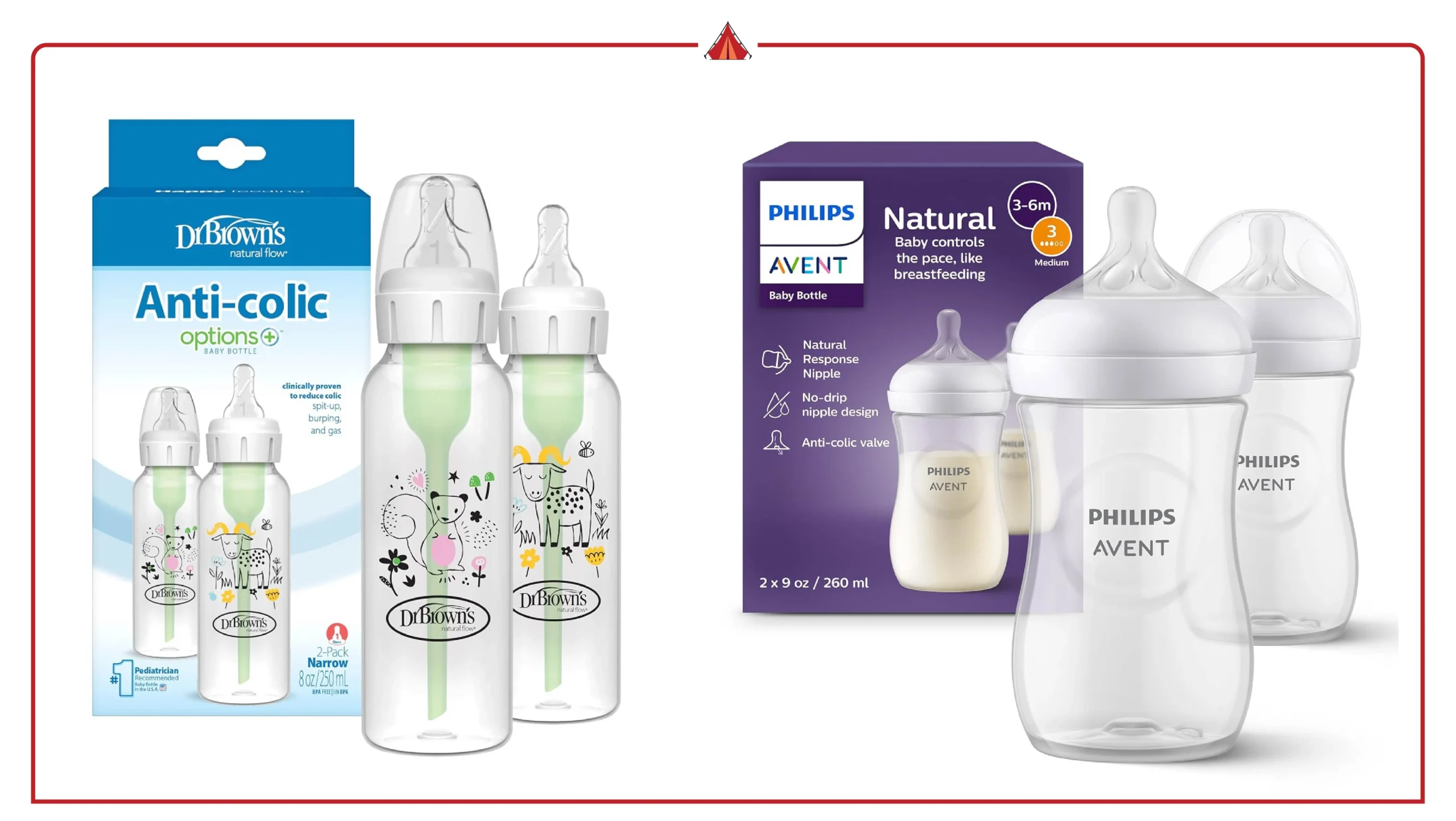
Finding the right baby bottle can feel overwhelming, especially when you’re trying to stick to a budget. High-quality bottles often come with a hefty price tag, but that doesn’t mean you have to compromise on safety, comfort, or ease of use. Whether you’re a first-time parent, looking for a practical gift, or simply trying to keep costs manageable, there are plenty of options under $20 that meet all the essential standards.
In this guide, we’ve carefully researched and tested a selection of affordable baby bottles that deliver on quality, durability, and convenience. You’ll find clear comparisons, detailed reviews, and practical tips to help you choose the right bottle for your baby’s needs. By the end, you’ll know exactly which bottles provide the best value without cutting corners on safety or usability.
Why Choosing the Right Baby Bottle Matters
Choosing a baby bottle is more than just picking a cute design. The right bottle can make feeding easier for both you and your baby, while the wrong one can lead to discomfort, fussiness, or extra work during cleaning. Here are the key reasons why it pays to choose carefully, even when shopping on a budget:
1. Safety Comes First
Not all bottles are created equal when it comes to materials. BPA-free, phthalate-free plastics and high-quality silicone or glass are essential for your baby’s health. Affordable bottles can still meet these safety standards, so it’s worth checking the label before making a purchase.
2. Comfort and Feeding Experience
Babies have preferences when it comes to nipple shape and flow. A bottle designed to reduce colic or mimic breastfeeding can help your baby feed comfortably and prevent gas or reflux. Even on a budget, some bottles are specifically designed with these features in mind.
3. Durability and Ease of Cleaning
Cheap bottles that break or stain easily can end up costing more in the long run. Look for bottles that are easy to clean, dishwasher-safe, or compatible with sterilizers. A durable, low-cost bottle can last for months without losing its shape or functionality.
4. Convenience for Parents
Features like measurement markings, wide openings, and compatible accessories make a big difference when preparing formula, storing milk, or traveling. Affordable bottles with these practical features save time and reduce stress during feeding.
Read Next: Best Baby Bottles & Accessories This Year: Complete Buyer’s Guide for New Parents
How to Choose Affordable Baby Bottles
Even when shopping on a budget, it’s important to pick a bottle that meets your baby’s needs and fits your lifestyle. Here are the key factors to consider when choosing affordable baby bottles under $20:
1. Material: Plastic, Glass, or Silicone
- Plastic: Lightweight, durable, and usually the most affordable. Make sure it’s BPA-free and resistant to staining.
- Glass: Heavier but highly durable and chemical-free. Many glass bottles come with silicone sleeves to prevent breakage.
- Silicone: Soft, squeezable, and easy to clean. Often designed to feel closer to breastfeeding.
2. Anti-Colic Features
Some babies are prone to gas, reflux, or spit-ups. Look for bottles with vented nipples or air-free systems, which reduce air intake during feeding. Even budget-friendly bottles often include basic anti-colic designs.
3. Nipple Shape and Flow Rate
Nipples come in different shapes, sizes, and flow rates. A slow-flow nipple is ideal for newborns, while older babies may need a medium or fast flow. Some bottles are designed to mimic the breast, making the transition easier for breastfed babies.
4. Ease of Cleaning
Choose bottles with wide openings and minimal parts. Bottles that are dishwasher-safe or compatible with sterilizers save time and reduce hassle. Avoid bottles with small crevices that can trap milk residue.
5. Capacity and Age Range
Baby bottles range from small 4–5 oz sizes to larger 9–10 oz bottles. Smaller bottles are great for newborns, while larger bottles work for growing babies who feed more at each session.
6. Compatibility with Accessories
Consider whether the bottle works with breast pumps, travel lids, or bottle warmers. Affordable bottles that fit common accessories can save money and increase convenience.
Top Affordable Baby Bottles Under $20
To help you make an informed choice, we’ve rounded up a selection of high-quality baby bottles under $20. Each one is safe, durable, and designed to make feeding easier for both you and your baby.
Comparison Table: Quick Overview
| Brand & Model | Material | Capacity | Anti-Colic | Age Range |
|---|---|---|---|---|
| Philips Avent Natural | Plastic | 9 oz | Yes | 0–12 months |
| Tommee Tippee Closer to Nature | Plastic | 9 oz | Yes | 0–12 months |
| Comotomo Mini Silicone | Silicone | 5 oz | Yes | 0–6 months |
| Dr. Brown’s Options+ | Plastic | 8 oz | Yes | 0–12 months |
| NUK Simply Natural | Plastic | 5 oz | Yes | 0–12 months |
Detailed Reviews
1. Philips Avent Natural Baby Bottle
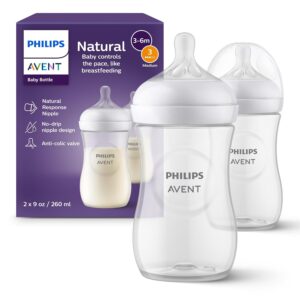
- Material: BPA-free plastic
- Capacity: 9 oz
- Features: Anti-colic valve, wide breast-shaped nipple, easy to clean
- Why it’s great: Designed to mimic the natural feel of breastfeeding, this bottle is excellent for babies transitioning from breast to bottle. The anti-colic valve helps reduce gas and fussiness.
- Pros: Wide opening for easy cleaning, dishwasher-safe, widely available
- Cons: Slightly larger than newborn bottles, may not fit all bottle warmers
2. Tommee Tippee Closer to Nature
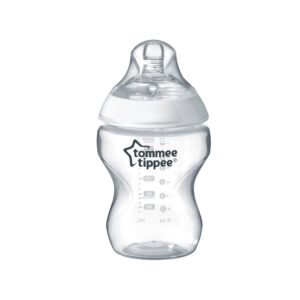
- Material: BPA-free plastic
- Capacity: 9 oz
- Features: Breast-like nipple, anti-colic design, easy to grip
- Why it’s great: Affordable and widely trusted, it’s perfect for formula or breastfed babies. The nipple design makes latching easy, and the simple construction makes cleaning a breeze.
- Pros: Lightweight, reliable anti-colic performance, budget-friendly
- Cons: Some parents prefer wider nipples for very young newborns
3. Comotomo Mini Silicone Bottle
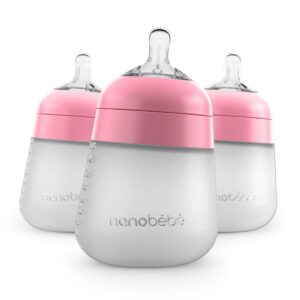
- Material: Soft silicone
- Capacity: 5 oz
- Features: Naturally shaped for easy latch, squeezable for controlled flow
- Why it’s great: Perfect for newborns and breastfed babies, this bottle feels very natural. The silicone material is soft, easy to clean, and resists odors.
- Pros: Soft and flexible, easy for babies to hold, chemical-free
- Cons: Smaller capacity, higher end of the $20 range
4. Dr. Brown’s Options+ Bottle
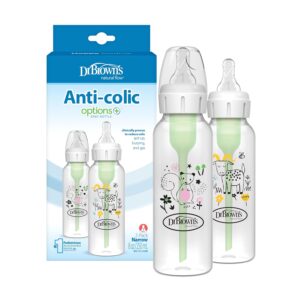
- Material: BPA-free plastic
- Capacity: 8 oz
- Features: Internal vent system to reduce colic, reflux, and gas
- Why it’s great: Known for reducing feeding-related discomfort, this bottle is a favorite for babies prone to colic. The vent system also preserves nutrients in formula or breast milk.
- Pros: Proven anti-colic system, easy assembly, good for long-term use
- Cons: Slightly more parts to clean than simpler bottles
5. NUK Simply Natural
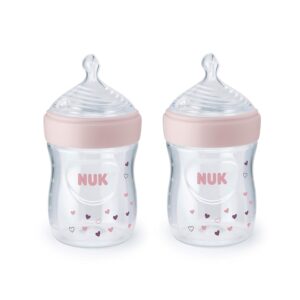
- Material: BPA-free plastic
- Capacity: 5 oz
- Features: Multiple nipple holes for natural feeding, anti-colic design
- Why it’s great: A simple, reliable, and very affordable bottle. Ideal for parents who want quality without spending much.
- Pros: Budget-friendly, easy to clean, compatible with most sterilizers
- Cons: Basic design, lacks some premium features like venting systems
Read Next: Best Baby Bottles for Breastfed Babies Who Refuse the Bottle (2025 Guide)
Product Comparisons: Plastic vs Glass Baby Bottles Under $20
When choosing an affordable baby bottle, one of the biggest decisions is the material. Both plastic and glass bottles have advantages and trade-offs, especially for parents shopping on a budget. Understanding the differences can help you pick the best option for your baby.
Plastic Baby Bottles
Pros:
- Lightweight and easy to handle, especially for travel or nighttime feedings.
- Usually less expensive, which makes them ideal for parents on a budget.
- Less likely to break if dropped.
- Often compatible with more accessories like bottle warmers and travel caps.
Cons:
- Can stain or retain odors over time.
- Some plastics may scratch easily, creating small grooves that can trap milk residue.
- While BPA-free plastics are safe, glass is naturally chemical-free.
Best for: Parents looking for lightweight, affordable bottles that are easy to carry and handle.
Glass Baby Bottles
Pros:
- Naturally chemical-free and resistant to staining or retaining odors.
- Durable and long-lasting if handled carefully.
- Can be sterilized at high temperatures without degrading material.
Cons:
- Heavier than plastic, which can be challenging for nighttime feedings or travel.
- Breakable if dropped, although many come with silicone sleeves for protection.
- Often slightly more expensive than plastic options under $20.
Best for: Parents prioritizing chemical-free materials, easy cleaning, and long-term durability.
Read Next: Glass vs Plastic Baby Bottles: Pros, Cons & What Parents Should Choose
Quick Comparison Table
| Feature | Plastic Bottles | Glass Bottles |
|---|---|---|
| Weight | Lightweight | Heavier |
| Durability | Drop-resistant | Breakable |
| Cleaning | Can scratch, may retain odors | Resistant to stains and odors |
| Price | Lower | Slightly higher |
| Safety | BPA-free | Naturally chemical-free |
| Best For | Travel, everyday convenience | Long-term use, chemical-free preference |
Bottom Line:
For affordable bottles under $20, plastic bottles are great for everyday convenience and travel, while glass bottles are ideal for parents who want chemical-free, long-lasting options. Many parents even keep a mix: glass for home and plastic for outings.
Tips for Using Affordable Baby Bottles
Buying a quality baby bottle under $20 is just the first step. To make the most of your purchase and ensure safe, hassle-free feeding, here are some practical tips:
1. Keep Bottles Clean and Sterilized
Even affordable bottles need proper cleaning to prevent bacteria buildup. Wash bottles, nipples, and caps thoroughly after each use using warm soapy water or a dishwasher if they’re dishwasher-safe. For newborns, consider occasional sterilization using a bottle sterilizer, boiling water, or microwave steam sterilizers.
2. Check for Wear and Tear
Plastic bottles can scratch or discolor over time, and nipples may wear out. Inspect your bottles regularly and replace any parts showing signs of damage to keep feeding safe and hygienic.
3. Choose the Right Nipple Flow
Babies’ feeding needs change quickly. Slow-flow nipples are ideal for newborns, while older babies may need medium or fast-flow nipples. Affordable bottles often come with interchangeable nipples, so you can adjust as your baby grows.
4. Store Bottles Properly
Keep bottles in a clean, dry place to avoid dust and contamination. If using glass bottles, handle them carefully to prevent breakage. Silicone sleeves or protective covers can reduce the risk of accidents.
5. Mix and Match for Convenience
Consider having a combination of bottles for different situations. For example, use a glass bottle at home for chemical-free feeding and a lightweight plastic bottle for outings. This approach keeps feeding practical and stress-free while staying within budget.
6. Avoid Overheating Milk
Always check the temperature of formula or breast milk before feeding. Affordable bottles work with most bottle warmers, but overheating can still damage nutrients or burn your baby’s mouth.
Following these tips helps your affordable baby bottles last longer, stay safe, and make feeding as smooth as possible for both you and your baby.
Read Next: Top Holiday Baby Feeding Accessories Under $50 (Perfect Stocking Stuffers)
Frequently Asked Questions (FAQ)
1. Are baby bottles under $20 safe for newborns?
Yes. Many affordable baby bottles are made from BPA-free plastic, glass, or silicone and meet safety standards. Always check the product description for safety certifications and material information to ensure your baby’s health.
2. Which cheap baby bottles reduce colic?
Look for bottles with anti-colic features, such as vented nipples or internal air systems. Popular budget-friendly options like Tommee Tippee Closer to Nature and Philips Avent Natural include simple anti-colic designs without exceeding $20.
3. Can I use plastic bottles instead of glass for my baby?
Absolutely. BPA-free plastic bottles are lightweight, durable, and convenient for travel. Glass bottles are chemical-free and easier to clean, but plastic bottles work perfectly well when chosen carefully. Some parents use a mix of both for different situations.
4. How many baby bottles should I buy for a newborn?
Most parents find that 6–8 bottles are sufficient for a newborn, depending on how often you feed and wash them. Having a few extras ensures you always have a clean bottle ready, especially for nighttime feedings.
5. Where can I buy affordable baby bottles online?
Amazon is one of the easiest places to find a variety of budget-friendly bottles under $20, with fast shipping and customer reviews to help you make an informed choice. Specialty baby stores and online retailers may also carry discounted options.
6. Do cheaper bottles clean as easily as more expensive ones?
Many affordable bottles are designed for easy cleaning, with wide openings and simple parts. Look for dishwasher-safe or sterilizer-compatible options to make maintenance easier.
7. Can budget bottles work with breast pumps or warmers?
Yes. Many affordable bottles are compatible with standard breast pumps and bottle warmers. Always check compatibility before purchasing, especially if you plan to mix bottle and breast feeding.
Explore our list of Top Affordable Baby Bottles Under $20 >
Conclusion & Buying Recommendations
Finding a quality baby bottle under $20 doesn’t mean compromising on safety, comfort, or convenience. The bottles we’ve covered in this guide combine affordability with features that make feeding easier for both you and your baby.
If you’re looking for a versatile all-rounder, the Philips Avent Natural or Tommee Tippee Closer to Nature bottles are reliable choices that work well for both breastfed and formula-fed babies. For newborns or babies who prefer a softer, more flexible bottle, the Comotomo Mini Silicone offers a natural feel and easy grip. If reducing colic is a priority, the Dr. Brown’s Options+ bottle’s vent system can help prevent gas and discomfort. And for parents seeking simplicity and the best value, the NUK Simply Natural bottle provides quality at a very budget-friendly price.
Remember, choosing the right bottle depends on your baby’s feeding style, your lifestyle, and whether you prioritize durability, chemical-free materials, or anti-colic features. Many parents find that keeping a combination of bottles—plastic for travel and glass or silicone for home—is the most practical approach.
